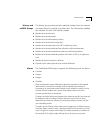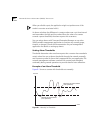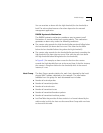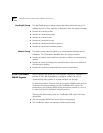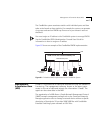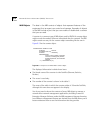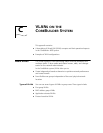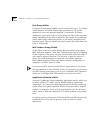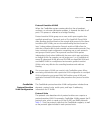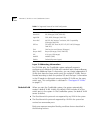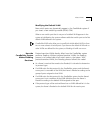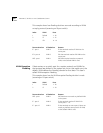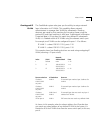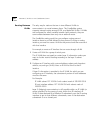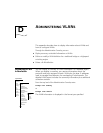
About VLANs C-3
Protocol-Sensitive VLANS
When the CoreBuilder system receives data that has a broadcast,
multicast, or unknown destination address, it forwards the data to all
ports. This process is referred to as bridge flooding.
Protocol-sensitive VLANs group one or more switch ports together for a
specified network layer 3 protocol, such as IP or AppleTalk. These VLANs
make flooding decisions based on the network layer protocol of the frame.
In addition, for IP VLANs, you can also make flooding decisions based on
layer 3 subnet address information. Protocol-sensitive VLANs allow the
restriction of flood traffic for both routable and nonroutable protocols. They
have a relatively simple configuration comprising one or more protocols
and groups of switch ports. These protocol-sensitive VLANs operate
independent of each other. Additionally, the same switch port can belong
to multiple VLANs. For example, you can assign port 1 on a CoreBuilder to
several IP subnetwork VLANs, plus one IPX VLAN, one AppleTalk VLAN, and
one NetBIOS VLAN. In a multiprotocol environment, protocol-sensitive
VLANs can be very effective for controlling broadcast and multicast
flooding.
Two or more types of VLANs can coexist in the CoreBuilder system. When
associating received data with a particular VLAN configuration in a multiple
VLAN configuration, port group VLANs, MAC address group VLANs, and
application-oriented VLANs always take precedence over protocol-sensitive
VLANs.
CoreBuilder
Protocol-Sensitive
VLAN Configuration
The CoreBuilder protocol-sensitive VLAN configuration includes three
elements: protocol suite, switch ports, and layer 3 addressing
information for IP VLANs.
Protocol Suite
The protocol suite describes which protocol entities can comprise a
protocol-sensitive VLAN. For example, CoreBuilder VLANs support the IP
protocol suite, which is made up of the IP, ARP, and RARP protocols.
Table C-1 lists the protocol suites that the CoreBuilder supports, as well
as the protocol types included in each protocol suite.



